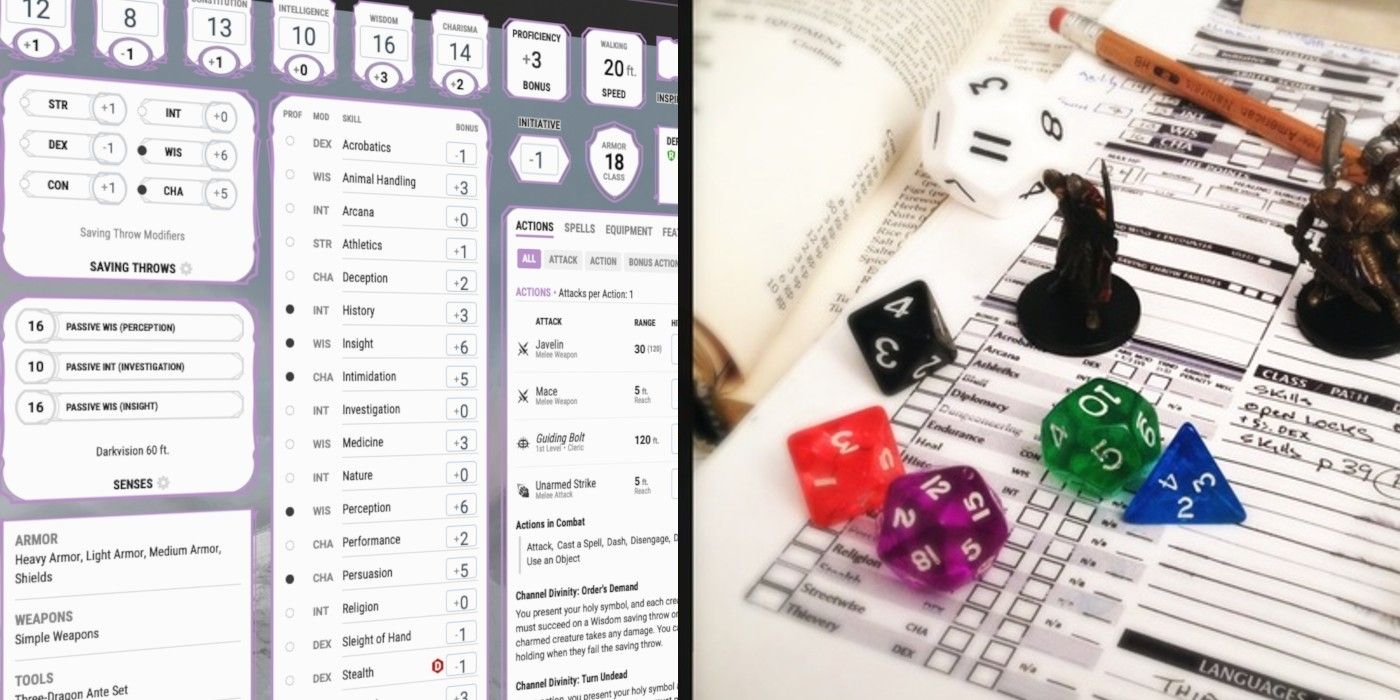Dungeons & Dragons has stayed close to its roots since the game’s origins, and like most tabletop RPGs, it can still be played solely with books, pencils, paper, and dice. D&D has also embraced modern technology, offering options for digital character creation, with D&D Beyond. Some players may be unsure whether using the tools of D&D Beyond are a better option for tracking character progress than paper character sheets updated by hand.
The web-based character creation software of D&D Beyond is not an entirely new concept, as similar web-based character creation was offered for fourth edition D&D via D&D Insider. The free version of D&D Beyond allows a player to create up to six characters and offers access to content from the D&D Basic Rules and System Reference Document. This actually encompasses a lot of D&D’s core content, including many spells, monsters, and magic items. Most importantly for players, it includes all of the races and base classes from the D&D Player’s Handbook, and one sub-class for each of them.
D&D Beyond is free to access and start generating characters, but there are costs involved to make the most of it. For around $30 per year, D&D Beyond’s “Hero Tier” offers unlimited character creation and access to unlimited homebrew content. This does not expand to the official content, however, as individual books like the Player’s Handbook and Dungeon Master’s Guide need to be purchased separately, as do any supplements, like Tasha's Cauldron of Everything. The majority of these are $30 to add to a D&D Beyond account, which will offer digital access to the book as well as adding its content to the character creation options, where applicable.
D&D Beyond Has Great Value For New Players
D&D Beyond is an excellent resource for players who are learning the system, getting them past some of the initial hurdles of translating choices into numbers on the character sheet. A player who equips their character with Scale Mail armor will see their Armor Class displayed on the D&D Beyond character sheet immediately, without the need to check the armor tables for maximum dexterity bonus, compare those with their own character’s dexterity bonus, and calculate the final number. When leveling up, D&D Beyond automates things like hit point increases and proficiency scaling. This is helpful for new D&D players who want to get into the game without slowing down to learn the rules, but over time, it could result in players missing out on learning all the rules for D&D.
The pricing structure of D&D Beyond could also affect the choices of long-term players. The free content is enough to let someone experiment with D&D, but hardly enough to support ongoing gaming, as one sub-class for each class will grow stale quickly. Paying $30 to add new books to D&D Beyond is an option, but with other virtual tabletops like Roll20 and Fantasy Grounds also selling the same books, in addition to the print copies or PDFs a player might buy through DriveThruRPG, D&D Beyond has a lot of competition out there.
For those looking to use D&D Beyond extensively for Play By Post games or its Avrae Discord option, investing in books through the service might be worthwhile, even if they are duplicative with a print copy. For those whose sessions involve webcam-based gaming, the same D&D books sold through a virtual tabletop service might be of more use. For traditional home groups, buying print copies or simple PDFs, and manually advancing a character by hand, is probably the best option. D&D Beyond still offers new D&D players the most streamlined method to generating and leveling a character, which is invaluable when learning the game. However, as players grow more accustomed to the rules, and manually track their own Dungeons & Dragons character’s progress, they may grow to prefer using a pencil and paper. Ultimately, it may just come down a player's preference.


